Hi, guest blogger Rita here, with some information on cleaning, polishing, and keeping your metal jewelry clean.
There are a variety of products out there for cleaning and polishing, and whether you are trying for a specific finish, or wanting to keep your jewelry creations pretty after sale, knowing what to use can be very confusing.
Cleaning/Highlighting
Ultra Polishing Pads (also known as Pro-Polish pads) are fantastic for cleaning up purposeful oxidation (like Liver of Sulfur or Win-Ox) from metal. These 2×2” tight-bond foam pads are permanently bonded with micro-abrasives. They come 20 to a package, and will polish the high points of an oxidized metal including silver, copper, brass and bronze like a breeze.
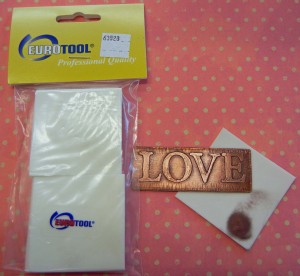
This pad removes a bit of the material, so the polishing of this copper etched piece left a copper residue on the pad.
3M™ Wetordry polishing papers allow for fast and easy finishing and polishing on flat and contoured surfaces. Working from the coarsest to the finest grade will remove oxidation and produce a bright shine on the high points of a piece.
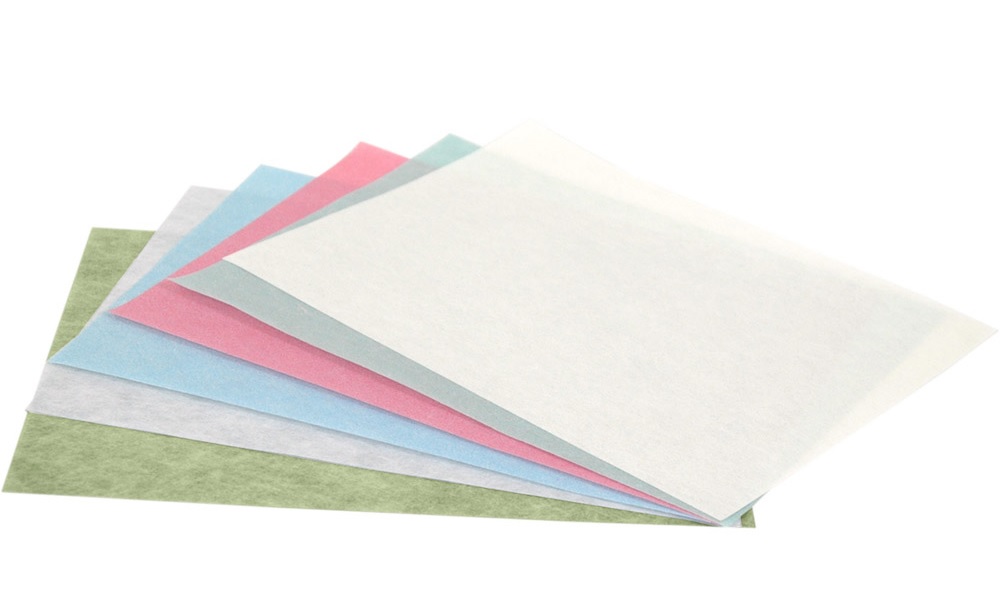
3M Polishing Paper, Assortment, Wetordry™
For large productions, the easiest way to clean up purposeful oxidation is with a tumbler. Load in your oxidized pieces, stainless shot, and Shinebrite. Seal the barrel, start the tumbler, and let it run for about 2 hours. When the time is up, strain out the shot and the pieces, return the shot to the tumbler barrel with clean solution, rinse and dry the pieces. You can shake the pieces in warmed sawdust, or speed up the drying with a heat lamp to prevent water spots.
Sealing
The cleaning methods above do not leave any residue to prevent further oxidation, so you may want to follow up with a sealer such as Renaissance Wax. It is a micro-crystalline archival-quality, pH-neutral wax that freshens colors and imparts a soft sheen without discoloring. Apply a thin layer, and buff to a full luster with a soft cloth.
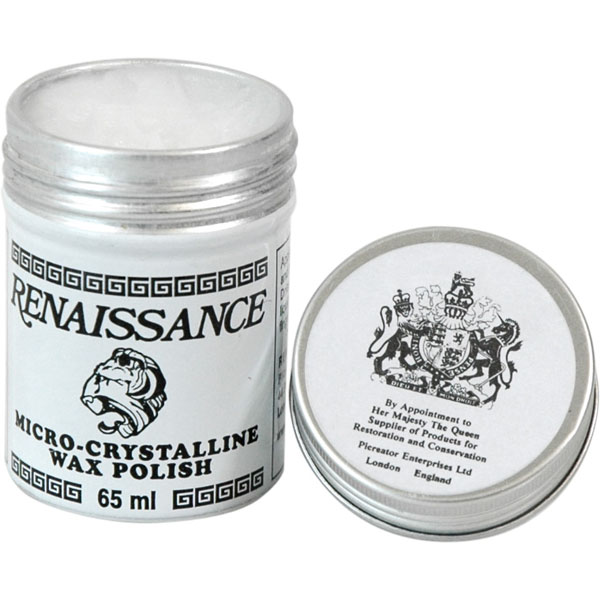
Renaissance Micro-Crystalline Wax Polish
Nikolas #2105 Clear Silver Lacquer is a “water-white”, air drying, solvent-based coating. When properly applied to metal surfaces, it forms a coating that protects from oxidation, perspiration, sulfur, and abrasion. The #2105 Clear Silver Lacquer dries to a hard transparent film that is an excellent sealant for interior metal products, particularly non-ferrous surfaces such as silver, copper, brass, and bronze. Follow the manufacturer’s instructions on the packaging, to seal and protect your jewelry.
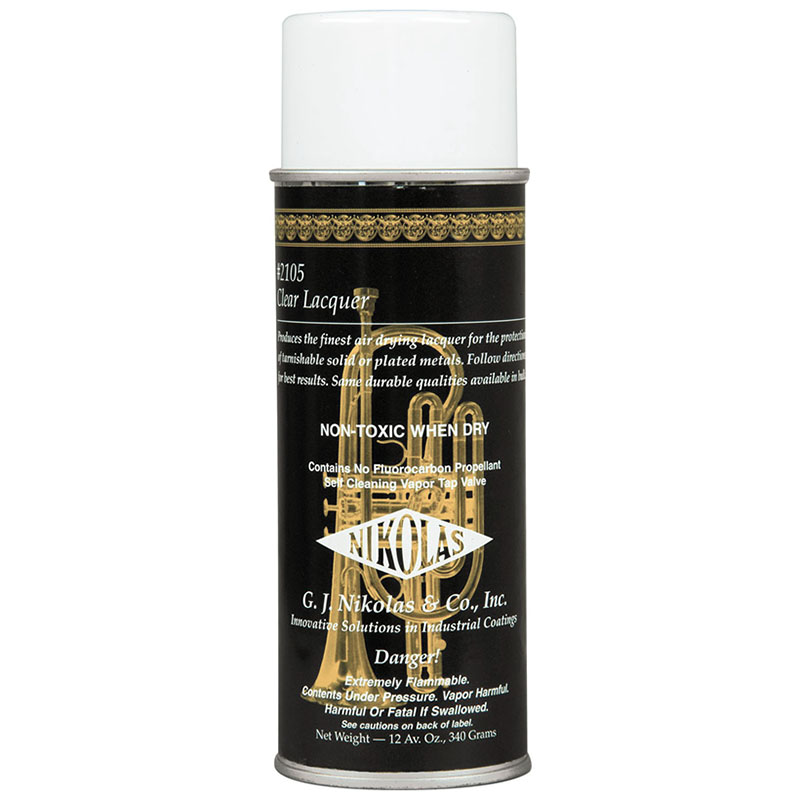
Nikolas Clear Spray Lacquer is great for sealing silver, copper, brass, and bronze.
Polishing
For removing oxidation from regular exposure to the air, you can also use a cleaning solution.
ShineBright Silver Dip easily removes tarnish to restore shine and brilliance to all metal jewelry. It is especially effective on Sterling Silver and works on 14K and 18K Gold, Platinum, and Copper. Do not try to use dip if your jewelry contains pearls, opals, coral, some genuine stones, painted or enameled surfaces. I choose not to use it if there are any genuine stones in the jewelry. Better safe than sorry! Dip will strip off all the tarnish in a matter of minutes, without much labor. It will also remove any intentional oxidizing, so pay attention to whether you want a completely shiny silver piece or not. It is very handy for chain and delicate items. Just place jewelry into the jar, immerse for 2 minutes, rinse with hot water, and wipe clean with a soft, lint-free cloth.
Polishing cloths (pads, gloves) all require a little bit of elbow grease. Unlike liquid cleaning solutions, they clean only the raised areas, leaving antiqued crevices unchanged.
This is the Brilliant Polishing Cloth that I’ve been using at my desk for about 4 years. Even after the cloth is dirty, it continues to work. Just don’t wash it. If you do, the chemical agent will be gone. The 7-1/2×12” cotton cloth is treated with a non-toxic, non-allergenic chemical agent which cuts through tarnish, and leaves an undetectable residue which inhibits tarnish from reappearing. It can be used on brass, copper, chrome, sterling silver, gold-filled, and gold vermeil.
The Jewelry Care Cloth is quite similar. The inner 6×8” cotton flannel cloth is treated with non-toxic cleaning and polishing agents and tarnish inhibitors especially formulated for fine jewelry. The outside layer is for buffing, but without the chemical agent. It will easily remove tarnish, makeup, fingerprints, dirt, and oil. It is not recommended for use on emeralds, pearls, onyx, opal, lapis, malachite, ivory, coral, or 24kt gold.
There are plenty of methods for removing tarnish from silver, using materials typically found at home. For one popular method, you’ll need an inert bowl (such as glass or ceramic), 2 cups very hot water, a teaspoon of table salt, a piece of folded up aluminum foil, and a tablespoon of baking soda. You can also add a teaspoon of vinegar to acidify the solution and speed up the reaction. This reaction only works with silver, so don’t use it on other metal types. The more silver in your item, the better this process will clean it. Here is a video with the process:
http://www.youtube.com/watch?v=CsKLcc13WBo
Other methods include polishing with ketchup, lemon juice, toothpaste, and various other items.
Protecting
Now that your pieces are clean and shiny, there are products available to help keep them that way.
Anti-Tarnish Strips are made from a special paper material impregnated with 3M™ TarniShield™ technology. One strip protects one cubic foot of air space for six months. Eight 2×7″ strips come per package. It protects silver, nickel, copper, bronze, tin, gold and plated metals from tarnish. Non-toxic, leaves no residue. Simply place strip next to polished metal in an enclosed area (jewelry box, storage bag, china cabinet, etc.)
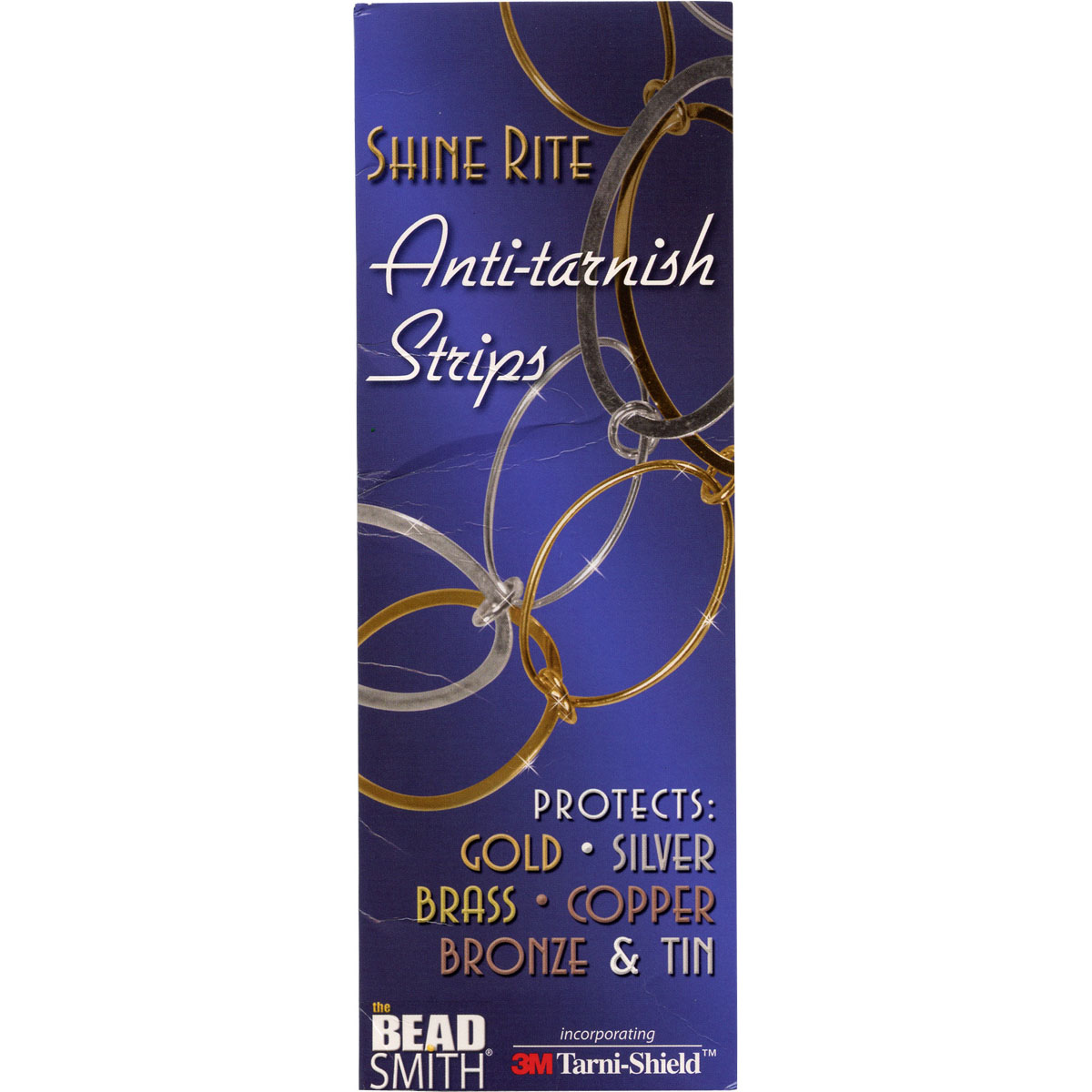
Protect your jewelry from tarnish with Shine Rite anti-tarnish strips.
Enjoy your clean and shiny metals. ~ Rita
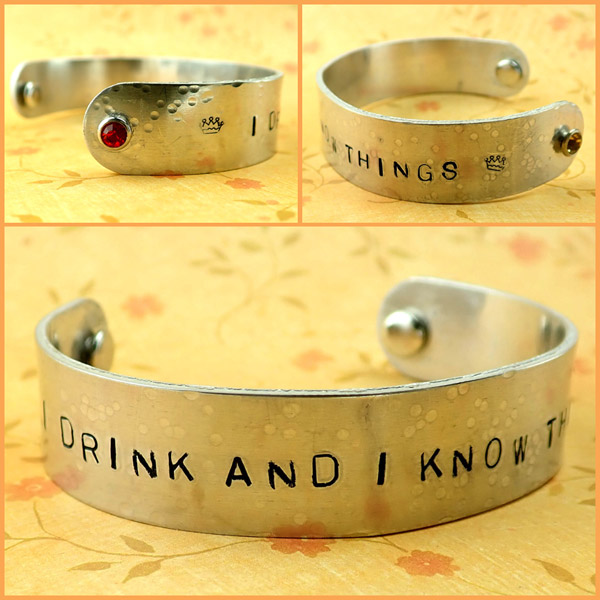
The Imp Bracelet Tutorial
by Rings & Things Designer Rita Hutchinson
Do you want to make the bracelet featured at the beginning of this blog post? You can find the free instructions in the Rings & Things Design Gallery.

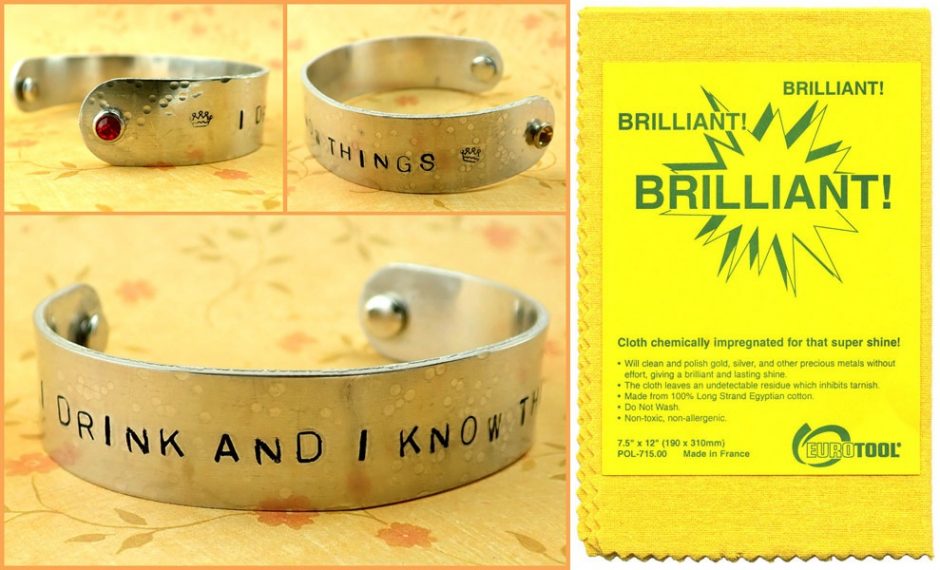
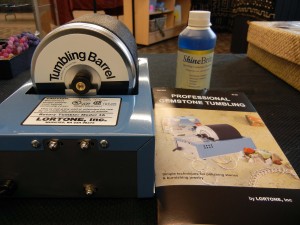
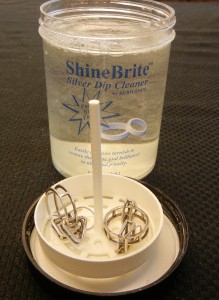
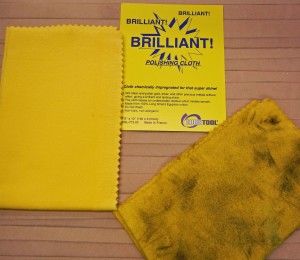
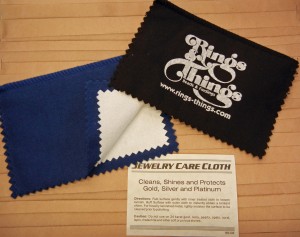

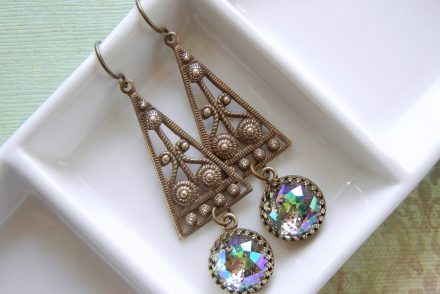
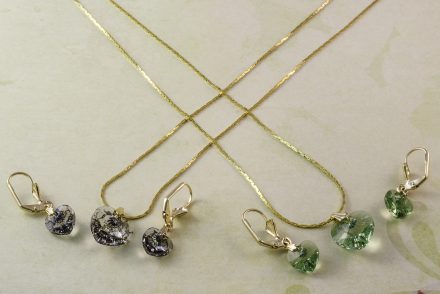
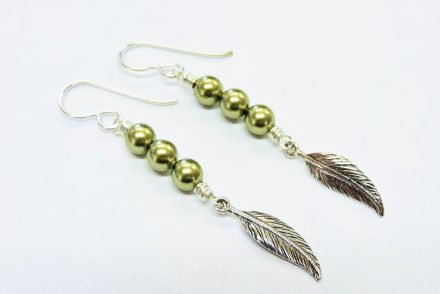
4 Comments
Fantastic info! Thank you!!!!
Cleaning pands inteed work but I think you also should use a dishwasher soap or baking soda. It complements your method great
Someone gave me the tip that Windex in your rock tumbler will help clean up jewelry oxidation as well. 30 mins in the tumbler with stainless shot and your jewelry is good to go.
Hi Sean, it may work on some jewelry oxidation, but windex will destroy the interior of some rock tumblers — it will turn the inside of a rubber rock tumbler into a gooey sticky mess.